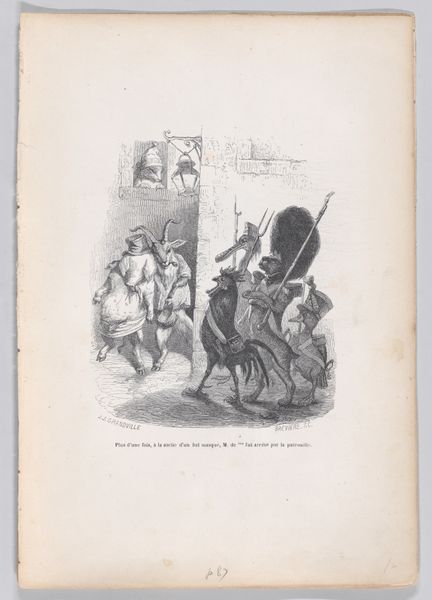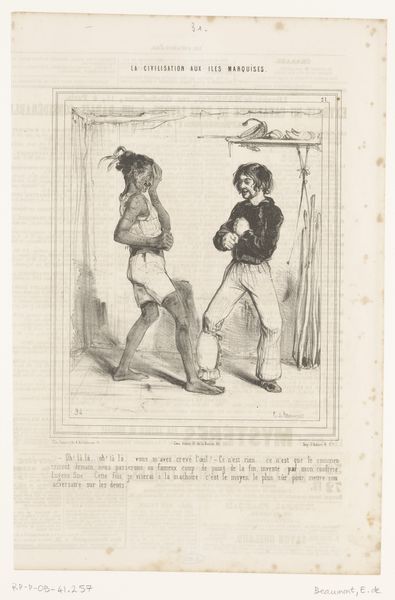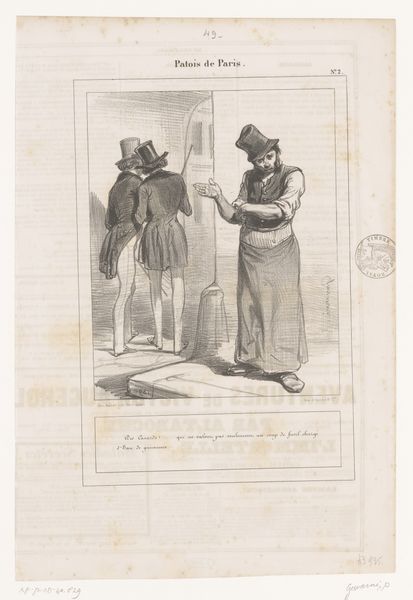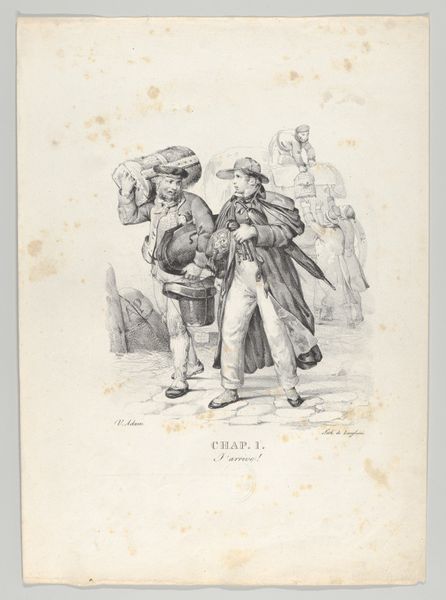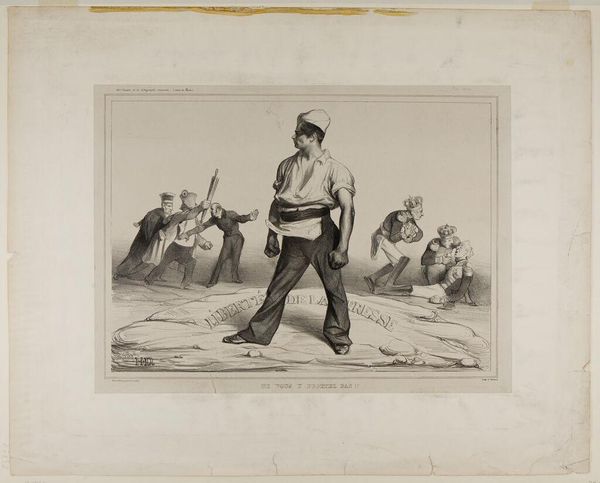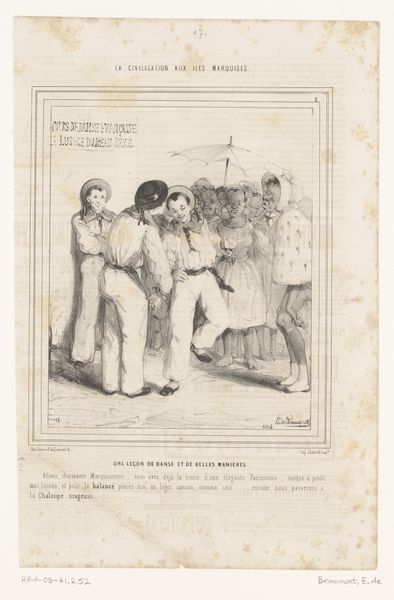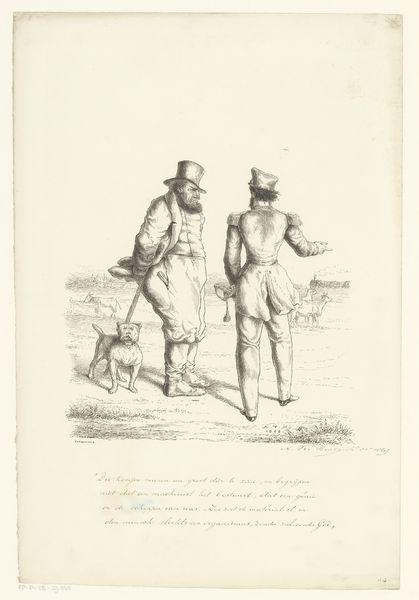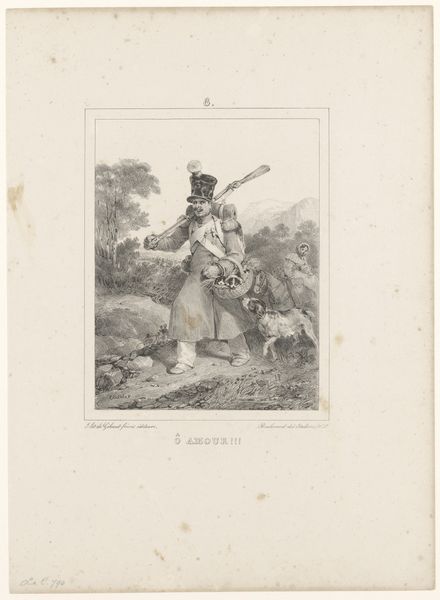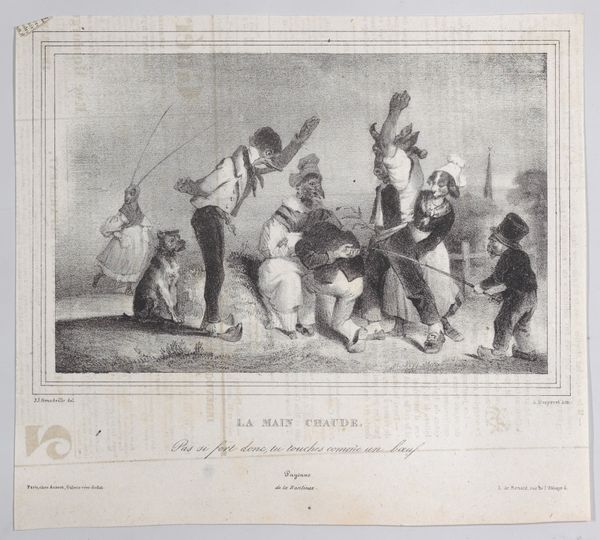
drawing, lithograph, print, paper, ink
#
portrait
#
drawing
#
lithograph
# print
#
caricature
#
old engraving style
#
paper
#
ink
#
romanticism
#
orientalism
#
19th century
#
watercolour illustration
#
genre-painting
#
history-painting
Dimensions: height 363 mm, width 245 mm
Copyright: Rijks Museum: Open Domain
Editor: This lithograph from 1843 by Edouard de Beaumont is titled "Caricature of a man being arrested". I find it immediately unsettling – something about the casualness of the two armed men juxtaposed with the central figure… it makes me wonder, what exactly is happening here? Curator: It is unsettling, isn't it? To me, this work whispers of power imbalances and the problematic nature of "civilizing missions." Consider the title, “Civilization in the Marquesas Islands.” Beaumont created this during a time when European powers were expanding their reach across the globe, often with devastating consequences for indigenous populations. How do you interpret the body language of the three figures? Editor: Well, the man being arrested looks almost surprised, perhaps a bit resigned? The others, especially the one on the left with the rifle, seems almost bored. What is striking to me is the complete lack of visible reaction by the indigenous man being arrested and led. Curator: Exactly. His averted gaze perhaps conveys a quiet dignity or maybe a deep sense of despair, knowing that any struggle against this apparent “civilization” would be fruitless. It speaks volumes, wouldn’t you agree? Beaumont, I suspect, is subtly critiquing the supposed benevolence of colonialism by highlighting its inherent absurdities and injustices. I see satire dripping from the press. It's bitter irony in ink, a visual indictment disguised as observation. How does the text beneath it strike you? Editor: You’re right! I was so focused on the visual that I didn’t pay close enough attention to the printed text beneath. With the context and text it clearly aims to dismantle colonial arrogance through humor and exposes an inhumane underbelly masked in an ostensibly moral cause. It seems so much more than observation to me now. Curator: Yes. Art can indeed be a window into history but also a mirror reflecting our present, if we bother to truly *see*. This work, a product of Romanticism and Orientalism simultaneously, continues to make you question the power and politics involved.
Comments
No comments
Be the first to comment and join the conversation on the ultimate creative platform.

